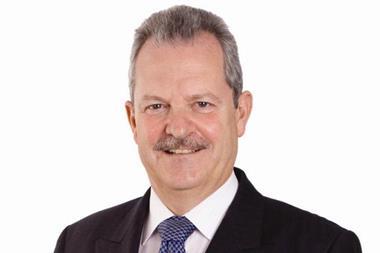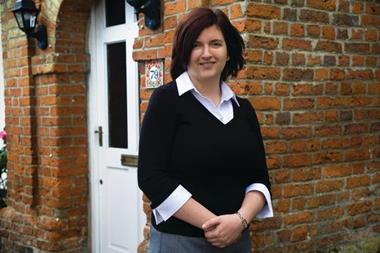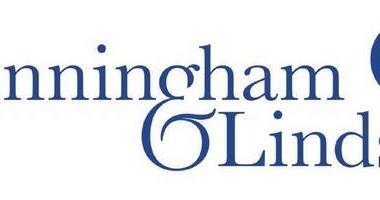As the new president of the Chartered Institute of Loss Adjusters, Graham Burgess wants to boost the profession’s influence, authority and attractiveness to graduates. As Muireann Bolger discovers, he’s ready for the challenge ahead
Graham Burgess gives the impression of thriving on a challenge. Tall and imposing, he makes his way through the annual conference of the Chartered Institute of Loss Adjusters (CILA) in Coventry with a purposeful walk and the air of someone who commands attention.
This is just as well. After completing his inaugural speech as new president of the institute, Burgess now takes the lead role in a sector besieged by challenges.
The first hurdle is dealing with the prospect of a looming skills gap. According to industry insiders, the average age within loss adjusting has now hit 50, and with only 12 people qualifying as chartered adjusters so far this year, there are fears this average will continue to creep upwards.
The profession has also felt the pinch as insurers clamp down on costs by opting for in-house adjusting solutions, forcing market players to become increasingly competitive. Meanwhile, changing and unpredictable weather patterns have led to peaks and troughs in the demand for capacity and a see-saw in staffing levels. This mounting pressure has led to speculation that the specialist loss adjuster could become an endangered species.
But if Burgess is daunted by the task ahead, he shows little sign. Well versed in inspirational speak, he says of his new team: “We all have a common vision; a vision that is clear and clarified and developing. We have a common aim and purpose.”
But while Burgess makes the right sounds, what is he going to do to inject some much-needed life into the sector? Or ensure that CILA retains a relevant voice in the insurance industry? He readily admits the institute’s floundering sense of direction has previously proved a barrier to growth. “We struggled to develop a clear strategy of what we wanted to do,” he explains.
Until, it seems, some doodling showed the way. “It was around this time last year during a meeting that we decided to write down the words that sum up what we do and what we are about. We found we could cluster the words under three headings: education, technical ability and knowledge.”
He says this exercise led him to realise that CILA should reassert itself primarily as an educational, standard-setting institute. “From that sprang all of its influence and ability,” he adds.
Consequently, CILA has appointed Malcolm Hyde as executive director (technical) to spearhead a revamp of the institute’s examination process. Burgess believes that offering multiple routes to qualification, tailored to reflect entrants’ diverse experience, will offer more options to interested candidates. Up until now, a single qualification route has forced specialists such as accountants, engineers and chartered surveyors into the same examination process as trainee technicians.
“Part of the change that we are bringing about will help us offer several routes to qualification instead of what was traditionally a single route to becoming a loss adjuster,” he says.
Furthermore, Burgess believes promotion of the profession abroad could also stir interest internationally and help fill the widening skills gap. He points out that outgoing president Angus Tucker has already visited China on behalf of the institute, and Hyde has promoted CILA’s interests in India. “Far from a shrinking profession, I believe it will be a growing one, though it may grow outside the UK faster than within the UK,” he says.
Fully prepared
With a career that spans nearly 35 years, Burgess is well qualified for the job. He joined GAB Robbins as an engineering graduate, rising through company ranks to head the commercial team before becoming UK technical director in 2000. He believes that becoming involved with CILA was a natural progression. “I thought that after 30-odd years in a job I really loved, it would be nice to give something back,” he says.
He remains fully confident that a younger generation will share his love of the claims process. “If you were a graduate and you wanted to join a profession that was expanding, vibrant, worldwide, and provided a fascinating and interesting way to earn a living, you would give it thought, wouldn’t you?”
He adds wryly that the financial crisis is also likely to revive interest among graduates as they shun banking careers in favour of insurance.
Moreover, Burgess is adamant his beloved sector has evolved sufficiently to meet the demands of the fast-paced insurance industry. “The larger claims management and integrated loss adjusters are now providing replacement services, contractor networks and skills surveying networks, and it is a much broader table of offerings that more closely match the needs of the market that they serve. So it is a more modern business,” he says.
Pressure points
A cloud passes over Burgess’s face when we touch upon the disgruntled minority within the sector who suggest that competitive pricing and the rise of contractor networks have led to compromises. Smaller players have argued that penny pinching by insurers has encouraged larger loss adjusters to rely on commissions from contractors. This, they say, has led to increased focus on payment rather than on the quality of work provided.
Burgess, however, pours scorn on the notion that the development of contractor networks has led to a conflict of interest. “If you are running contractors’ network, you are perfectly entitled to cover your costs in a margin for profit … If there was some outrageous profit being made, the procurement people would be saying ‘No, your margin is too big; it is unacceptable’,” he bristles.
Surprisingly, he also has little patience with the suggestion that insurers are failing to pay loss adjusters a fair price for their service. “Insurers recognise nowadays that it is unwise not to pay an appropriate price because in the long term you need an appropriate price, not just for that job but for loss adjusters to be able to deliver that job in one year’s time or in ten years’ time,” he explains briskly.
Yet, as he ponders his new role, a note of caution occasionally tempers his seemingly boundless optimism. “You don’t change anything overnight,” he muses.
But Burgess comes across as a man whose moments of self-doubt are seldom. He reverts to visionary mode once again when describing his main goal for his presidency as ensuring the “dream” of a flourishing future for the sector is kept alive. He adds: “If I can go through my year with this plan staring to unfold – and it will take more time, much more than the life of one president – I shall be very happy.” IT





































No comments yet